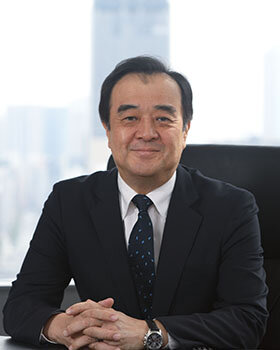Media Foreign Affairs and National Security 2025.10.09
No matter who wins the LDP presidential race, prospects for change are dismal
The future of the ruling party remains uncertain as presidential candidates offer no real direction
The Japan times on Oct 2, 2025
Nothing can be more difficult than predicting the outcome of Saturday's Liberal Democratic Party presidential election.
All five candidates ran in last year's race, making them familiar faces for the public. However, the political landscape surrounding the LDP has changed dramatically since the Upper House election in July, with the party losing majorities in both houses of parliament for the first time ever. The upcoming LDP election will undoubtedly impact Japan's domestic and foreign policies for the next decade.
And yet, I can't recall in recent memory an LDP presidential election that has generated as little excitement as this one. Criticisms abound, with none of the candidates offering fresh ideas. Yet beneath these superficial currents, the fundamental undercurrent of Japan's domestic politics — which has undergone drastic changes over the past few years — remains essentially unchanged. This is the result of the decline of existing big-tent parties unable to address widening social disparities and the anger and frustration toward politics felt by people left behind.
The key for the LDP is whether the once-proud party can win back its traditional supporters who have abandoned it in recent elections and shifted to opposition parties, and whether it can rebuild a stable political power base.
There are four key threads in this leadership selection: ideology, populism, gender issues and generational change.
First, ideology. Ideological conflict within the LDP itself has never been particularly severe. While the party prides itself on being “conservative,” the degree of conservatism among its members varies considerably. The LDP can be described as a party where all members fall somewhere on a spectrum ranging from “hard-line conservatives” to “moderate conservatives,” excluding the “far right” and “far left.” In that sense, Chief Cabinet Secretary Yoshimasa Hayashi stands out as the most traditional LDP presidential candidate among the contenders.
Next is populism. Traditional LDP politics has fundamentally been about economic populism, or “handouts.” In that sense, the emergence of foreigners as a political issue in the leadership race is a very recent phenomenon.
On gender issues, the traditional LDP has reflected Japan's typical male-dominated society. While some voices express hope that Sanae Takaichi will be elected as the first female prime minister, this sentiment has hardly gained majority support within the party. This is the same for other political parties. This context highlights just how formidable the glass ceiling is for Takaichi.
Regarding generational change, this has never been a major issue within the traditional LDP. Looking at the ages of LDP presidents when they became prime minister, the situation is literally hopeless. Specifically, only three were in their 50s: Kakuei Tanaka at 54, Junichiro Koizumi at 59 and Shinzo Abe at 52. All others were 60 and above, with three in their early 70s when they took the helm: Kiichi Miyazawa, Yasuo Fukuda and Yoshihide Suga. In that sense, you can clearly see how farm minister Shinjiro Koizumi's age of 44 is an anomaly.
With all of this in mind, what might happen if each candidate were to be elected LDP president?
To state the conclusion first: Regardless of who becomes the next president, it’s unlikely that the LDP can undergo a major transformation and build a new stable political force. This would likely remain true even if the new LDP president were able to form a new coalition with some other parties. Below, I will explain the reasons for the three front-runners: Koizumi, Takaichi and Hayashi.
First, regarding Koizumi: Symbolizing “generational change,” he may embody the LDP's transformation. On the other hand, ideologically he is at best neutral and at worst, a man with no convictions — a typical populist. His youth aside, Koizumi lacks both experience and substance required to lead the nation. Even if he surrounds himself with seasoned veterans, could Koizumi truly hold his own against global leaders like America's Donald Trump, Russia's Vladimir Putin or China's Xi Jinping? Japan today simply does not have the luxury of giving on-the-job training for a young politician.
Next up, Takaichi: Should the LDP elect her, she would presumably become the first female prime minister, given parliamentary approval. She would have the advantage of making a strong impact on voters from a gender perspective. On the other hand, ideologically Takaichi is a hard-line conservative — though she is not necessarily a realist like former Prime Minister Shinzo Abe. In that sense, coalition talks with opposition parties would likely be challenging. Moreover, if she were to make political compromises for the sake of building a coalition, she would face the dilemma of disillusioning steadfast conservatives who comprise her base.
Finally, Hayashi symbolizes policy consistency and continuity through his experience and track record, having served as chief Cabinet secretary, as well as in the foreign and defense minister positions. Ideologically, he is a centrist belonging to the LDP's traditional mainstream, never engaging in populist rhetoric. In this sense, a Hayashi administration would likely be the most stable, but at the same time the least “novel.” Hayashi’s would be the least likely to give the impression that the LDP has transformed.
In terms of political stability, Hayashi ranks highest, followed by Koizumi, while Takaichi remains the most uncertain. Ideologically, Takaichi is also the populist most likely to veer to the right. On the other hand, both populist Koizumi and the nonpopulist Hayashi have less ideological bias, making coalition negotiations with opposition parties easier.
But at the end of the day, Koizumi lacks substance, Takaichi’s right-wing tendencies could be off-putting and Hayashi lacks charisma because he is such a model student. All of which makes rebuilding of the LDP a remote possibility.
